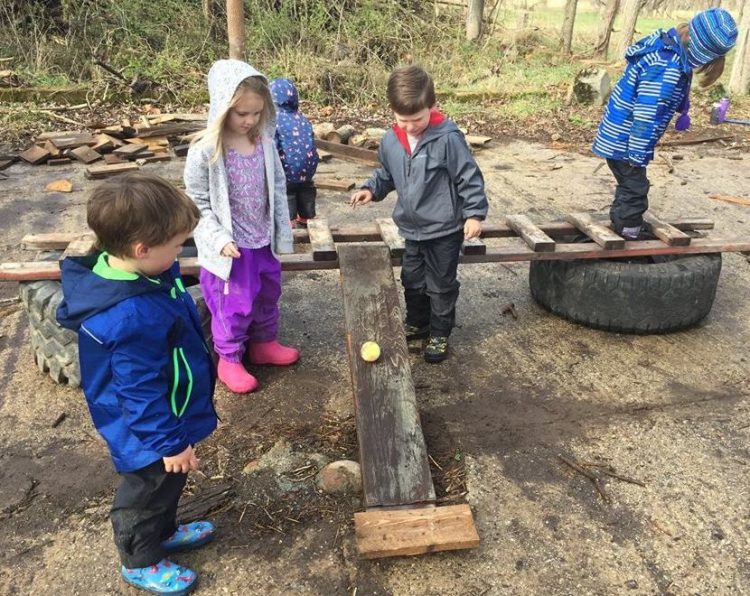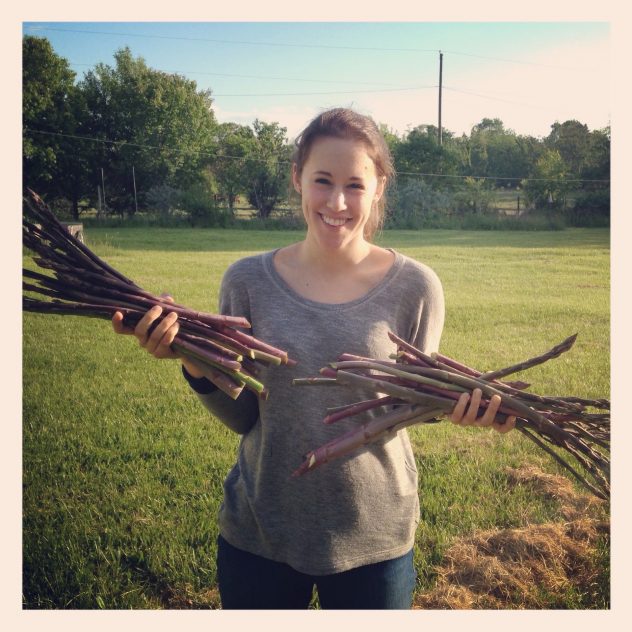By Emma Huvos (ECE Outdoor Educator, Founder, Riverside Nature School)
When I taught in a traditional preschool classroom, I was constantly spending time and money I didn’t have to create what I thought were inviting, exciting spaces intended to foster deep and meaningful play. Week after week, I fussed over signs and props and materials and made sure my centers were perfectly organized for each new day of school. And week after week, without fail, I found myself repairing damaged items, intervening in student squabbles, and questioning why, despite my supposed competence as a teacher, my students were failing to have the type of immersive play experiences I knew were so important for their overall development.
Looking back now, I understand the myriad factors that contributed to my struggle. For one, my carefully curated props and neatly crafted signs were just that—mine. For play to be meaningful, it must originate naturally from the child. They must feel ownership over their creative exploration. As teachers or parents, it’s easy to get caught it up in what things look like from our adult perspective, completely forgetting that children see the world through unique eyes and deserve the chance to create their own play spaces and scenarios. When children are involved in selecting or creating the materials needed for their play, their feeling of ownership translates into greater care for the items involved.
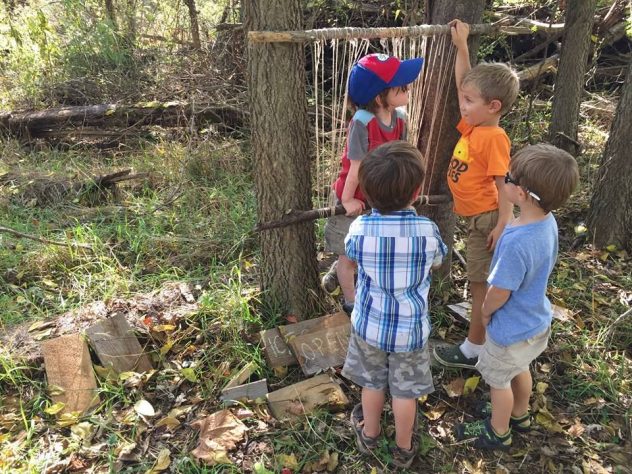
Equally problematic was our strict classroom schedule. No sooner had children begun to explore a play space or scenario than they were being interrupted, forced to break free of the imaginative world and turn their focus to other, “more important” things. And on the rare occasions when the students did become deeply involved in playful exploration, they were required to clean up their materials as soon as the allotted time was up, eliminating any chance that they would return to the same imaginative space at a later time to explore more deeply. Genuine deep play requires ample space and time, two things that are sorely lacking in most traditional preschool settings.
Since launching my own nature-based preschool program rooted in the German Forest Kindergarten model, my understanding of imaginative play has evolved dramatically. These days, my classroom is the great outdoors, and what few materials we have are hardly glamorous. I’ve shed most of the trappings of traditional preschool programs (we have no play food, no coloring pages or worksheets, no designated “dramatic play” space), yet I’m seeing deep imaginative play and genuine collaboration on a level I never witnessed when teaching in a traditional classroom setting. With no preset curriculum, the children are free to pursue their own interests at their own pace, and the results are truly magical.
Riverside Nature School: Early Childhood Education Re-Imagined
Within minutes of getting outside each morning, children as young as three become engaged in tasks of their own choosing and remain deeply focused for extended lengths of time with no outside prompting. Some choose to play independently, challenging their balance by leaping around our stump circle, soothing themselves by climbing a familiar tree, or collecting mud and leaves to create delicacies in our mud kitchen. Others engage in complex group play, often building upon a scenario developed on a previous day. A ladder balanced across two tires becomes a bridge with a troll under it, a pirate ship bound for foreign lands, or the counter of a bakery stocked with mud pies. The humble stick becomes a sword, a magic wand, a fishing line, a key.
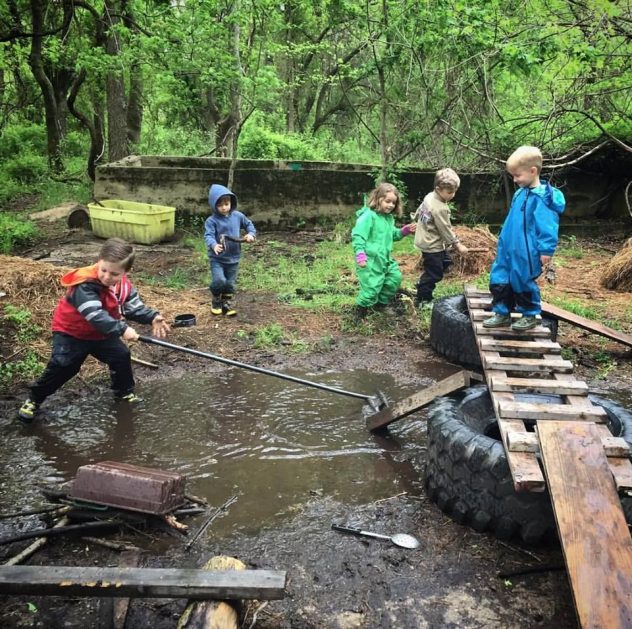 There is none of the direct instruction typical in most early childhood classrooms, but there is no shortage of learning either. Leaves are collected and exchanged as currency, helping to hone math skills, and sidewalk chalk is used to create signs on scraps of wood, allowing the children to practice their writing skills in a meaningful context. Building ramps and bridges allows the children to explore engineering and physics while simultaneously developing their gross motor skills by carrying heavy objects and balancing on slippery or uneven surfaces. All the “subjects” that would be taught indoors are covered naturally through the children’s organic play and exploration. And as pediatric occupational therapist Angela Hanscom outlines in her book Balanced and Barefoot: How Unrestricted Outdoor Play Makes for Strong, Confident, and Capable Children, the natural setting also allows for the development of a wide range of “soft” skills; things like cooperation, creativity, self-regulation, and flexibility, all essential for healthy development and long-term success.
There is none of the direct instruction typical in most early childhood classrooms, but there is no shortage of learning either. Leaves are collected and exchanged as currency, helping to hone math skills, and sidewalk chalk is used to create signs on scraps of wood, allowing the children to practice their writing skills in a meaningful context. Building ramps and bridges allows the children to explore engineering and physics while simultaneously developing their gross motor skills by carrying heavy objects and balancing on slippery or uneven surfaces. All the “subjects” that would be taught indoors are covered naturally through the children’s organic play and exploration. And as pediatric occupational therapist Angela Hanscom outlines in her book Balanced and Barefoot: How Unrestricted Outdoor Play Makes for Strong, Confident, and Capable Children, the natural setting also allows for the development of a wide range of “soft” skills; things like cooperation, creativity, self-regulation, and flexibility, all essential for healthy development and long-term success.
Freed from the confines of an indoor classroom and the traditional school day schedule, the children have free reign to be as loud and dirty and messy as they desire. Despite this (or perhaps because of it), there is never a feeling of chaos. Energy and activity ebb and flow, but arguments are infrequent and when disputes arise they are generally resolved by the children with little adult intervention.
By stripping away the bulk of adult impositions, from cutesy crafts to superfluous rules, the children have been given back their natural freedom. They are allowed the time and space to get “bored,” and as a result, they quickly come up with endeavors far more creative and entertaining than any that an adult could ever have imagined. They are confronted with risks and challenges, and they rise to the occasion. When given true independence, they prove to be competent, capable, and compassionate beings.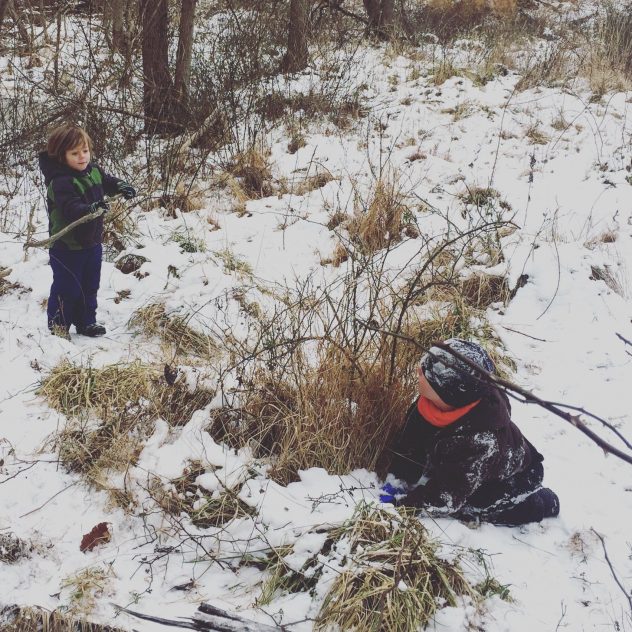
We’re all familiar with the trite saying “less is more,” but in the case of early childhood education, it really is true. There is no better teacher than experience, no better classroom than nature. The more that we adults can remove ourselves from the equation, the more freedom we can gift our children, and the better off they will be.
